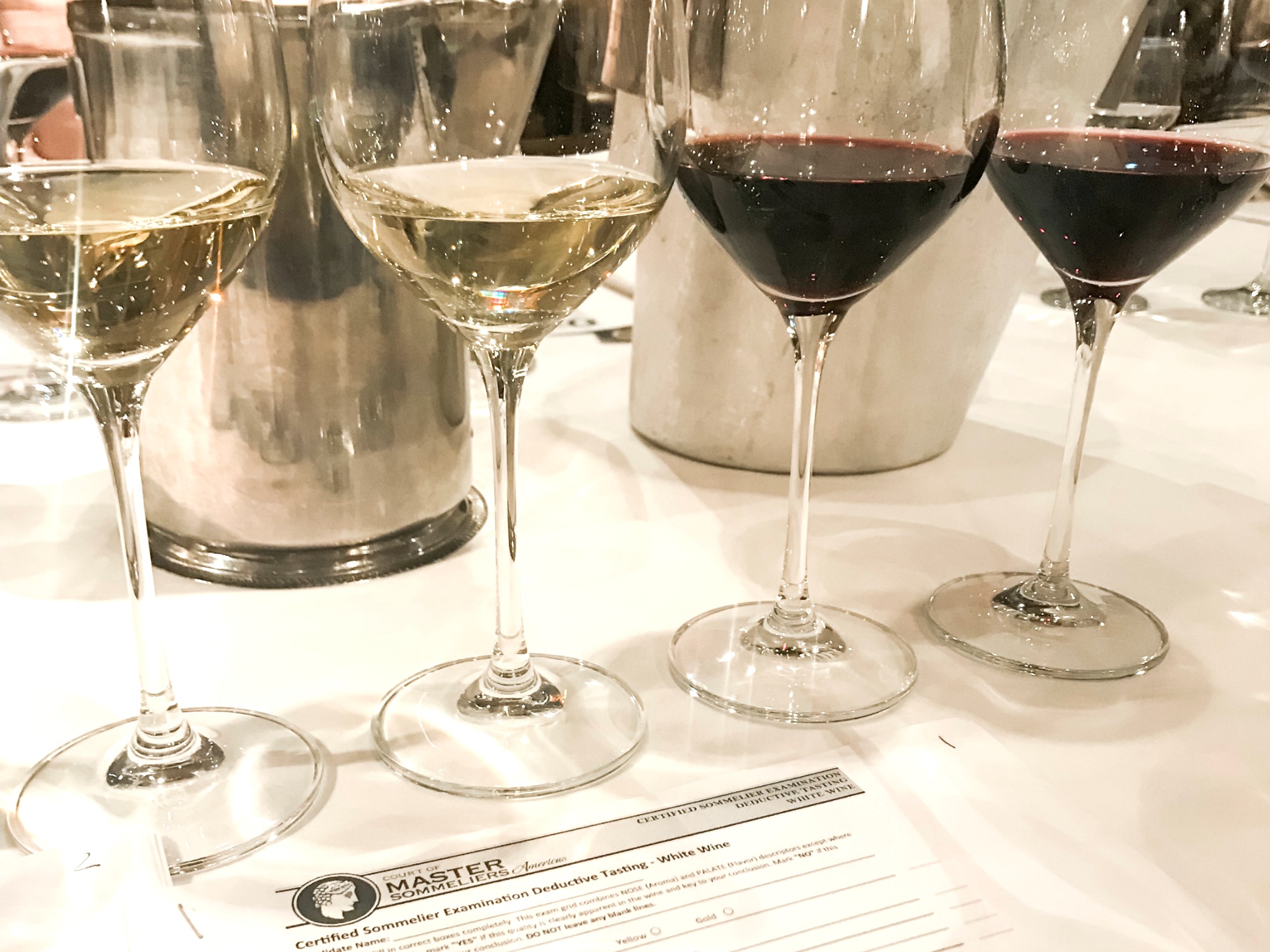
Journey to Certified Sommelier
The Certified Sommelier Exam is the second exam in a series of four exams given by The Court of Master Sommeliers: an organization that sets the standard for beverage service within the hospitality industry. The title of ‘Sommelier’ means different things to different people and many argue over what it means at all. Do you need to be called a Sommelier to be able to teach, talk about, and recommend wines to others? Certainly not. I’ve been mentored by plenty of educated wine lovers that had no certifications. Do you need to work in a restaurant to be a Sommelier? Also, no. However, most do, and many will argue that you should. Sommelier (sul-muhl-yei) is French and translates to ‘butler’ or ‘wine steward’. These days it describes a person in charge of food and wine within an establishment (restaurant, hotel, estate, or household). I have found various definitions, but what’s most important is hospitality. Hospitality is a major component of the Sommelier title and what separates this certification from other wine certifications.
Of all of the avenues in wine certification, this is the one I have always wanted to tackle.
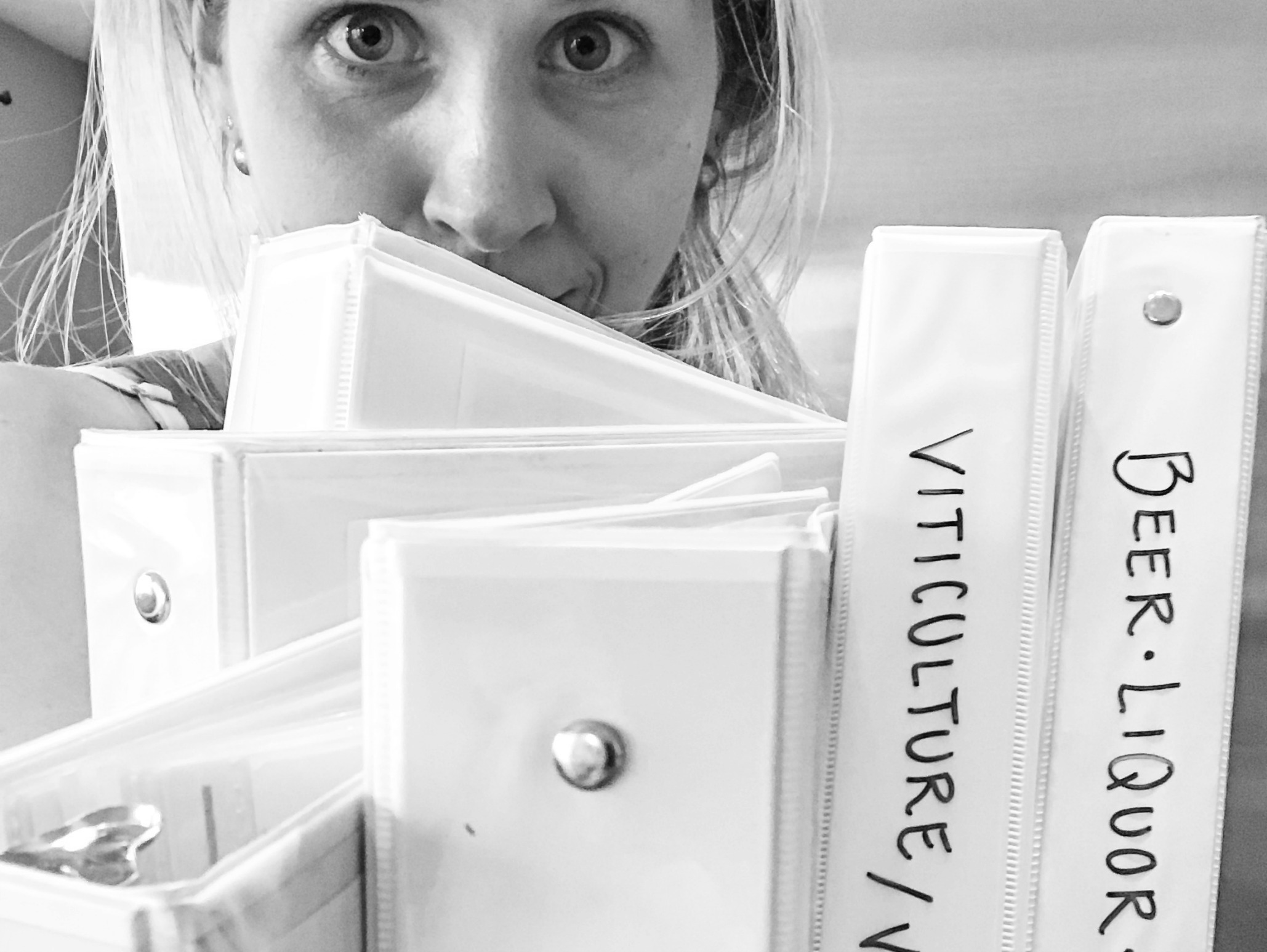
There are two parts to this post. Part one is a recap of my journey in restaurants and wine. It’s all of the experiences that led me to the Certified Exam. If you want to bypass this and just read about the exam, skip to Part 2. Part 2 lists and describes each component of the exam, and highlights my whirlwind experience taking it.
1
My Journey in Wine
I used to be a teacher.
I graduated with my Master’s in Early Childhood Education, however, I learned early in my career that working in elementary schools was NOT my passion (despite loving children, loving teaching, and being fairly good at it…). It is well known that teachers don’t make much money, so I decided to get a summer job at a fine dining restaurant. I figured serving people food and wine would be a relatively easy task for some extra cash.
I was slightly mistaken.
It turns out hungry and thirsty adults can be equally as demanding as small children. The first few months were spent drowning in the rush of restaurant chaos. I was anything but graceful on the floor, fumbled over menu definitions, spilled more than a few glasses of wine on a tray, and didn’t know the difference between Merlot and Malbec. My managers argued over whether or not I was cut out for the job. As a well-educated adult in my early 20’s this news was a slight blow to my pride. So, of course, I set out to prove them wrong.
I got really good at serving. I became much quicker on my feet, improved my service standards, started learning more about food and wine, and eventually, decided I rather enjoyed the job.
I quit teaching.
In case you were wondering, explaining to family and friends that you quit your job and gave up your degree to become a server and study wine definitely raises a lot of eyebrows.
The beverage program in that restaurant inspired me to learn about wine. Our wine director would have us taste and talk about wine before service every night. It was fascinating. I had no idea that Riesling could pull flavors from the soil (blue slate), or that Sauvignon Blanc paired so well with vegetables because it had a vegetal quality (jalapeño, grass, chive)! The more I learned, the more fascinating the world of wine became.
Eventually, I was introduced to The Court of Master Sommeliers and decided to take the first exam in a series of four: The Intro Exam.
I studied like crazy for this 75-question multiple-choice exam on the world of wine, where the passing rate is pretty high. The test isn’t ‘a walk in the park’, but if you study classic varieties and regions, passing isn’t too difficult. I ended up passing and promising myself I’d study even harder in the upcoming year and become a Certified Sommelier.
You see, technically, you can’t call yourself a Sommelier unless you pass the Level 2 (Certified) Exam. They also take away your Level 1 (Intro) certification if you don’t move on to the Level 2 within three years.
Moving into another restaurant, I was able to gain some bartending experience, and train the staff on the basics of wine. My GM allowed me to open a few bottles a week and pair it with food from our menu to see what worked and what didn’t. Incredibly driven, I worked really hard at the restaurant, while guests would occasionally ask ‘what I did other than serving’ or ‘what I was in school for’ (sigh).
Then I got pregnant.
Terrified to put wine in my mouth for fear of anything happening to my baby, wine tasting was put on hold. Excited about being a mom, I stepped away for a bit. It wasn’t until about six months after having my first child that I realized I could be a mom AND have a passion. So, I picked up The Wine Bible by Karen MacNeil, started a tasting group, and began to dig deeper.
I became a complete wine nut. I started building massive binders of information, along with an Instagram for wine, and even a blog (well what do you know!). Then came baby number two. However this time it didn’t stop me from studying. I was able to taste and spit …and I did a lot of that.
I would go to whatever industry events people would invite me to. I’d request a spit bucket on dates with my husband. I was constantly at wine stores waddling around loading up my cart with cases of wine, while people stared at me wondering what the heck an 8-month pregnant woman was doing with so much wine!
After my son was born I went back to work pretty quickly. There wasn’t much sleeping anyway, so what were a few more extra late nights? Sleep-deprived or not, I was going to take the Certified Exam. Committed to studying 2-3 hours a day, I learned and tasted along with anyone that would help me. My evenings leading up to the exam were spent practicing service with bottles of inexpensive Cava around a table of stuffed animals after my kids went to bed.
I studied everything.
The Court doesn’t give you a curriculum or gauge the level of material you need to know. It’s hard to know what sort of questions are going to be on the test, so I studied it all! How people study for the Master Sommelier exam is beyond me. The amount of knowledge required for the Certified Exam is enough to drive you just a little bit insane.
On Oct. 21 I packed up my car and drove with a friend to The Finger Lakes to take my exam. Below I highlight all three parts of this intense experience!
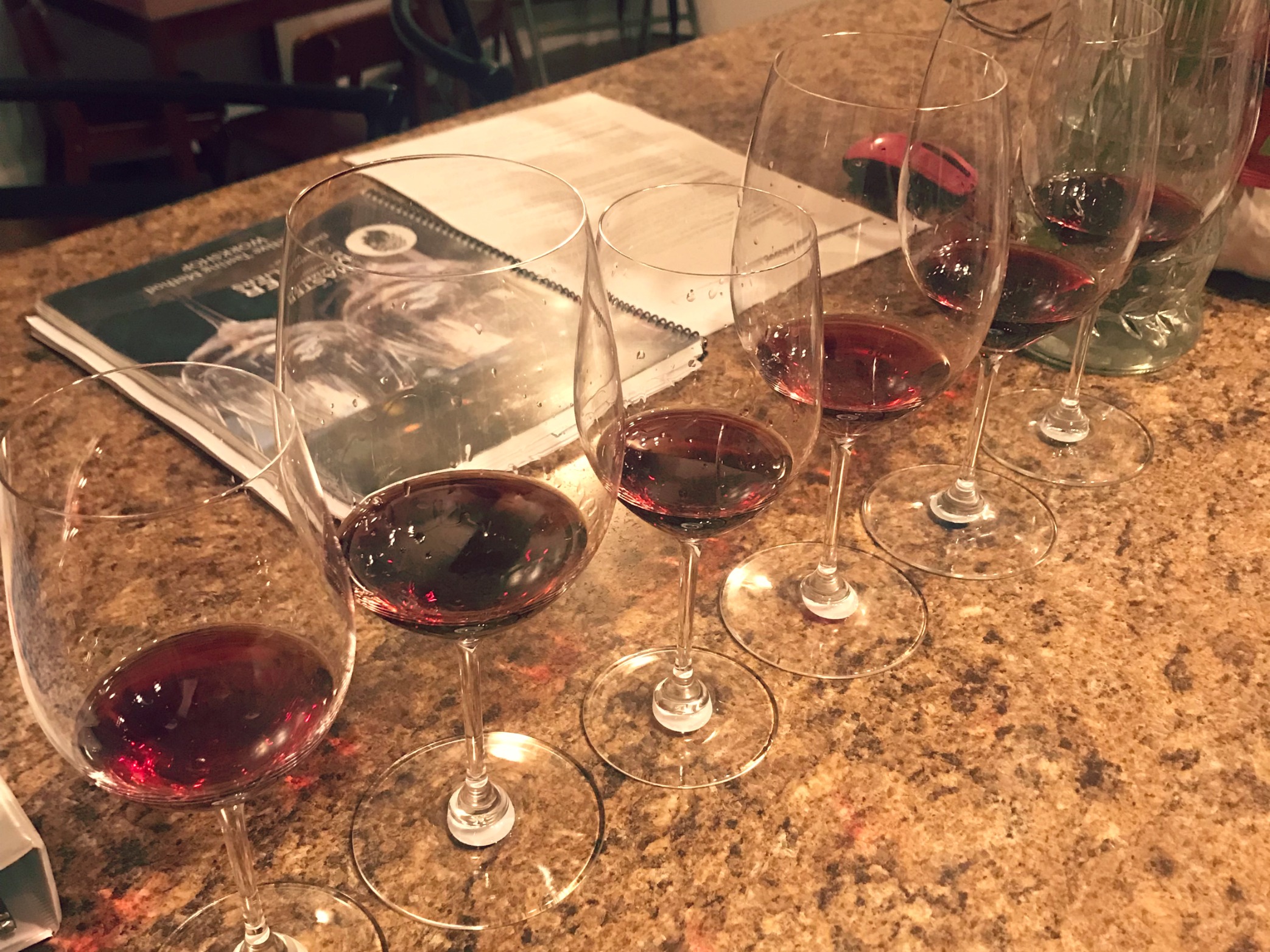
2
The Certified Sommelier Exam
Other than a slight crick in my neck, I slept surprisingly well the night before taking this test. I knew what I knew. I couldn’t cram anything else into my brain, so hopefully, the stuff I knew was the stuff on the exam! Either way, I was taking the exam.
The Certified Sommelier Exam includes three portions: Tasting, Theory, and Service. You have to pass all three to pass the exam. Fail one part = fail the whole exam (although the court labels it NO PASS …which is way more positive).
Tasting
The Tasting part of the Certified Exam includes identifying four wines, where they’re from, and their age range. The process is something like solving a mystery. You are putting a bunch of clues together to get to your end result. Hopefully, by this point, you’ve tasted enough to know key fruit and non-fruit elements in each testable grape, as well as acid, alcohol, and tannin levels to match. The wine doesn’t need to be correct, but the analysis does. You have 30 minutes to identify four wines as well as write a short sales pitch for each of them. Oh, and fun fact: you’ll never know if you are right or wrong, as The Court never tells you the wines.
I walked into the exam room at 8AM to a sea of almost 20 nervous faces and sat down to my wines. Two whites and two reds had been placed in front of me, along with the deductive tasting grid I’d been practicing with for so long. We were given instructions on how to fill out our grid and then once we heard ‘begin’ everyone started swirling and writing. The room was dead silent, except for a few deep breaths here and there and some loud spitters. I smelled through each of my wines. The advice I was given while tasting with a great mentor: “Start with the wine that speaks to you the most”. That was was wine number 2. Knowing I had one wine down motivated me through the others, which were harder than I thought they’d be. I guess I had some fantasy that everything would come to me at that moment, but that wasn’t the case. I struggled with my final conclusion for three of my four wines, however, I was pretty confident in my tasting notes.
Scrambling to finish my sales pitches, I set my pencil down right as my test was being pulled and replaced with a theory exam.
Yes, you read that correctly, barely time to recollect before what’s considered the most difficult portion of the Certified Exam: Theory.
Theory
Theory is hard. A friend of mine said it well: “It’s like they pull the questions out of a random grab bag of information and throw it onto a piece of paper.” It includes everything from percentages, producers, labels, regions, maps, fortified wines, and even spirits. You have 30 minutes to answer 45 multiple-choice, short answer, and matching questions, and sadly, many of those questions aren’t multiple choice! It’s hard to gauge how difficult this part is, as it depends entirely on what they decide to ask! The Court wants to see that you know and can relay detailed information about specific varietals, regions, wine laws, and producers!
I studied the hardest for this portion of the exam, so that gave me some hope! Some of the stuff I knew very quickly, and some of the stuff looked like it was written in another language. I did what I usually do when testing. I went through and filled in the answers I knew and came back and made my best guess for the others.
Once this part is over there’s no sigh of relief, as you are given a random time to come back for the service portion of the exam. My time just happened to be the very last one …two full hours away.
‘Fantastic’.
I went to the bar but did not have a drink. I asked the bartender for hot water and inhaled three full mugs of chamomile tea to tame the adrenaline rushing through my body. I also had a piece of pizza because I felt as though having something in my stomach would keep me from feeling sick to my stomach.
I’ve never loved performance-based exams and despite working in the service industry for YEARS, I was dreading service.
Service
For the service portion of the exam, you are, in fact, ‘putting on a show’. It involves role-playing a service situation as it may happen in a restaurant setting, completing various service tasks. The biggest task involves opening sparkling wine and answering various questions while doing so. The Master Sommeliers want to see you are able to compose yourself, even if you don’t know the answer to something or something goes wrong, which it probably will. If you work in the service industry, the steps of service should come very easy to you. That being said, you should know the steps of service so well that it becomes muscle memory. Know how to open a bottle of Champagne quietly and with ease. Knowing Tete De Cuvees and producers for everything is also helpful.
Overall, smile and be hospitable!
My turn finally came, and I made my way to a big room where two hosts stood in front of me and another girl who was white as a ghost and a bit shakey. I was nervous, but this girl was clearly more so. I made it a point to not look at her (nervous energy is contagious)! The hosts explained what the service situation would be (name of the mock restaurant, the tasks required of us, etc.). I wrote everything they said on my notepad. We then walked into a big room, dropped our bags, and were pointed in the direction of our service station and table, where a Master Sommelier sat waiting. I was asked to greet the table with a simple service task, followed by opening a bottle of ‘Pol Roger – Sir Winston Churchill’ (which was actually Cava). During this task, the Master Sommelier rattled off loads of questions on aperitifs, classic cocktails, beer recommendations, fortified wines, and wine and food pairings. I wouldn’t say my performance was perfect, but once I got into the flow of things, my nerves went away.
I made it through my series of questions and tasks and was asked to face a wall and wait until they called ‘time’. I looked over my shoulder and realized I forgot to remove the cork from the table (damn). Otherwise, I felt pretty decent about Service. Passing the exam in its entirety, however, I wasn’t sure about.
I thought I had a chance.
Results
We made our way back to the ballroom around 2:30 (after a much needed Manhattan next door), and were handed a glass of sparkling wine. I thought I had a chance of passing, and my Manhattan had me believing it even more. I still bit my tongue. Then the Master Sommeliers announced that a total of three people passed (out of almost 20). I waved my hopes of passing goodbye.
We were instructed to grab our envelopes and see our results before the names of those who passed were announced. I grabbed my envelope and brought it to a bar corner and peeked in.
Overall Result: Pass.
I swallowed a huge lump of air.
Anyone who has taken this exam knows how much effort goes into it. It takes a lot of time, resources, and money.
Passing was a major relief. My emotions were pretty high, but I held it together pretty well. At least I did until they started calling us up to collect our certificates. I realized my name was the last to be called. The last name called is reserved for the person with the top score. It was then that I probably shed a few tears… like one or two, maybe.
That was a very happy moment.
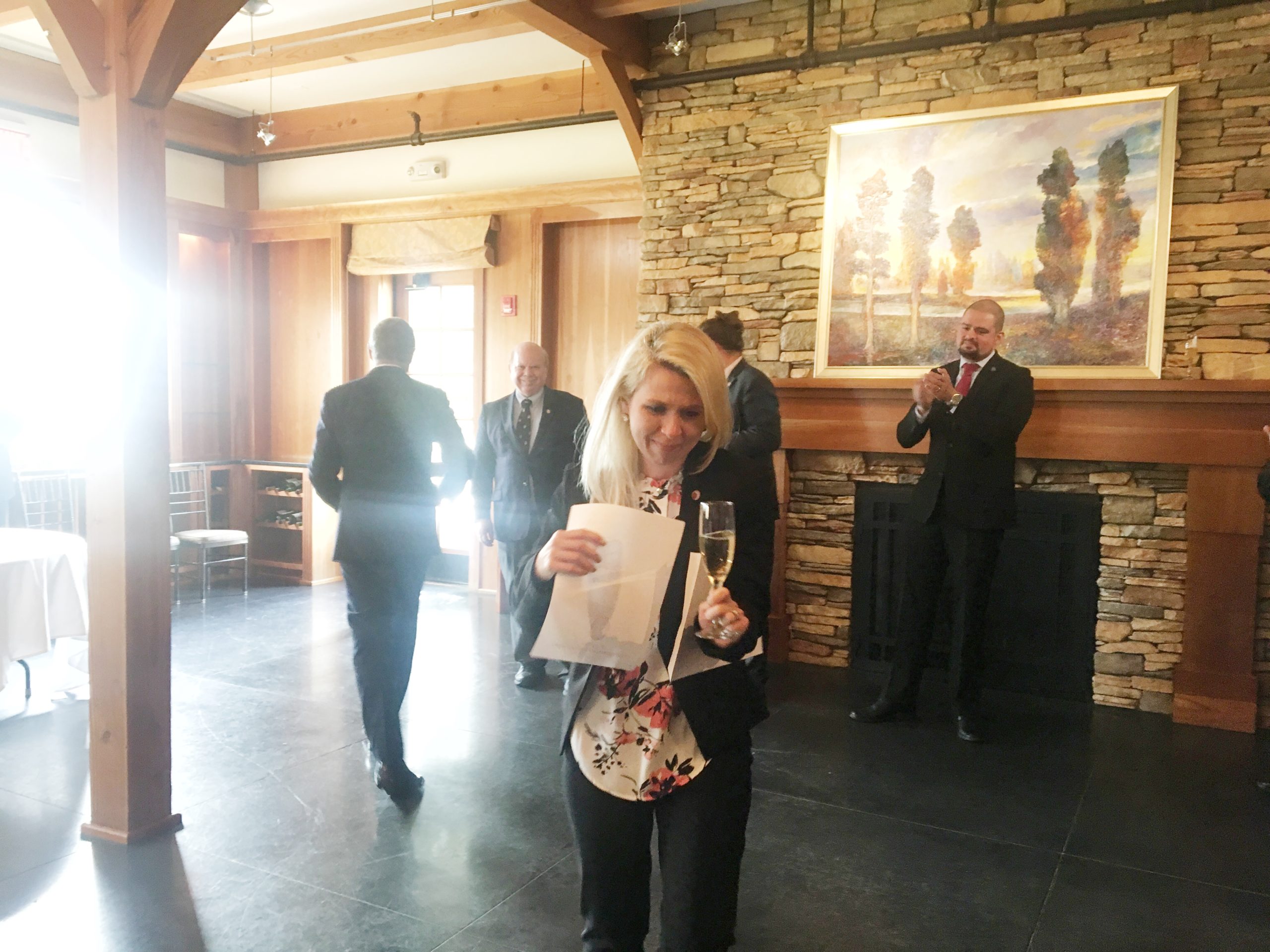
I’m now a Certified Sommelier, but I’m certainly not done! Despite learning so much, I feel like I’ve just skimmed the surface. I feel like I know a lot, but also so very little, and I can’t wait to keep learning.
I hope that if you have taken this exam you can relate in some way, and if you haven’t, it gives you some insight into the exam, appreciation for the journey, and motivation to keep doing what you love!
Exam Resources
Tasting
Download and print the Court of Master Sommeliers Deductive Tasting Grid for REDS and WHITES, or use the Deductive Tasting Format to blind wines aloud. Both written and verbal deductions were helpful in my experience, although the Certified Exam is in a written format.
The Court also offers a Deductive Tasting Course, which is great for learning the process. I took this a few years ago and benefited greatly from it.
Buy a Coravin. It saved me a lot of money and preserved so many good bottles. With all of the wine flights I poured, it was essential!
- In addition to these, make it a point to find or form a tasting group. Taste as much as possible! Taste with people at your level, but also with those at a higher level. This will help you more easily identify tasting notes and structural elements! If you need a Tasting Group, we have a Virtual One with students from all over the US!
(or you can order a Blind Tasting Bundle for practice)
Theory
The best information for the exam is found on GuildSomm. Buy a yearly membership!
My favorite books for theory include Windows on the World: Complete Wine Course for the Intro Exam and The Wine Bible for the Certified Exam.
I used maps from both GuildSomm and The Society of Wine Educators. I filled them with notes I believed to be most important.
- In addition to these resources, I made my own binders for every region. For me, these were more helpful than notecards. I’m a visual learner and having maps and organized study guides helped me outline important information!
Service
I have compiled a list of everything helpful Including various Service Guiedes HERE!
- In addition to these, it helps to make a mock beverage list you can refer to during the exam. Include producers for every style of wine, spirit, etc.
↑ Some of the links above are Amazon Affiliate links, which means that I will earn a commission if you choose to purchase them. I will never recommend anything that isn’t valuable or useful in my wine study journey, or something I have no experience with. I hope these products/resources are equally helpful in your wine journey.
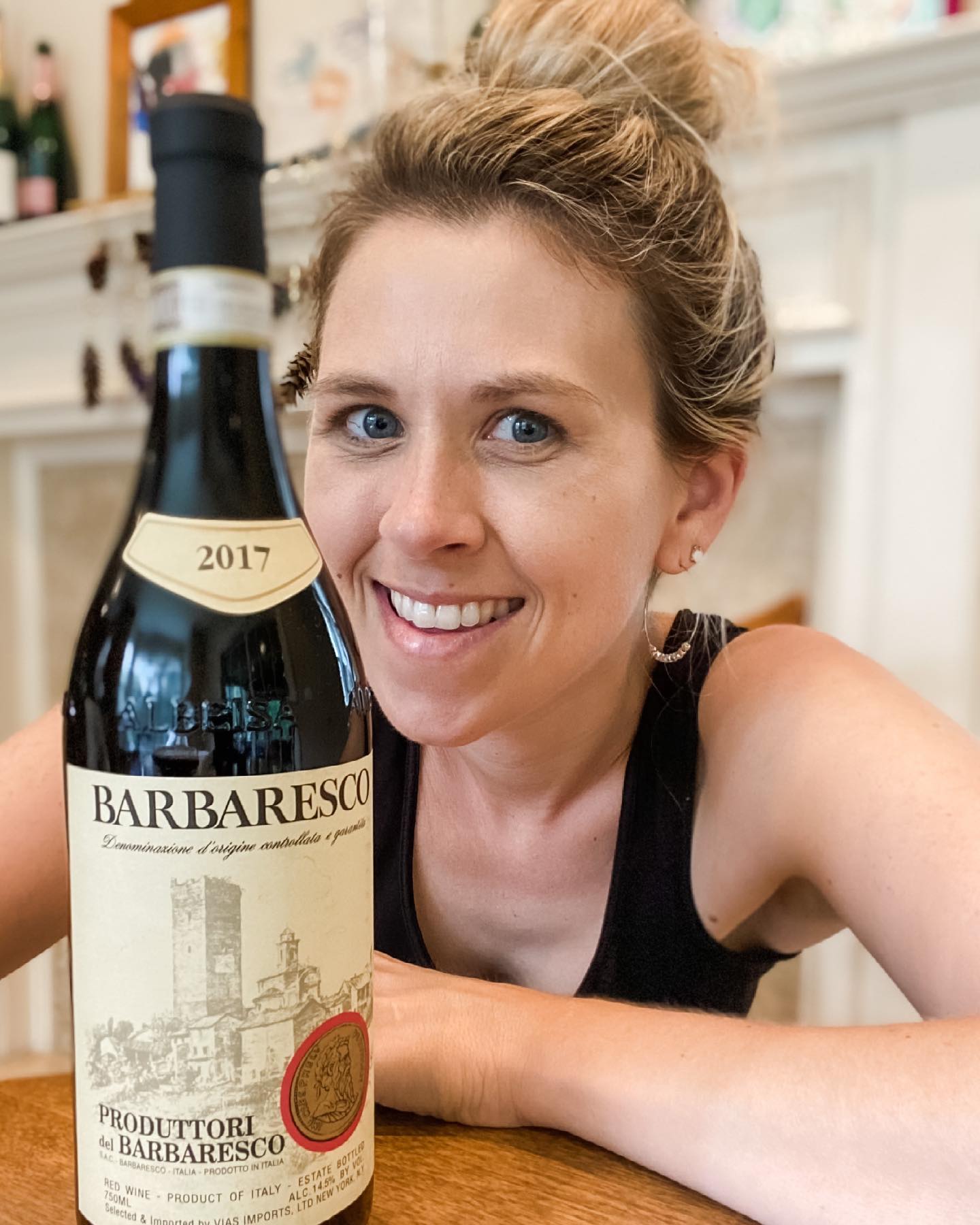

A Certified Sommelier and Certified Specialist of Wine with a passion for everything wine + beverage!
Curious about the other Certifications?
↓
Preparing for WSET 3: What it’s like and tips for study!
Curious about what the content is like? Where to start? What is important to know? I’ll provide some clarity here so you can be well on your way to passing this exam!
Preparing for the CSW Exam: What it’s like and tips for study!
Have you heard of the CSW exam? Here’s my experience.
All you need to know about Merlot: A quick guide
What is Merlot? Learn about this smooth and luscious grape in this friendly guide!
NEW Service Guides!
Check them out
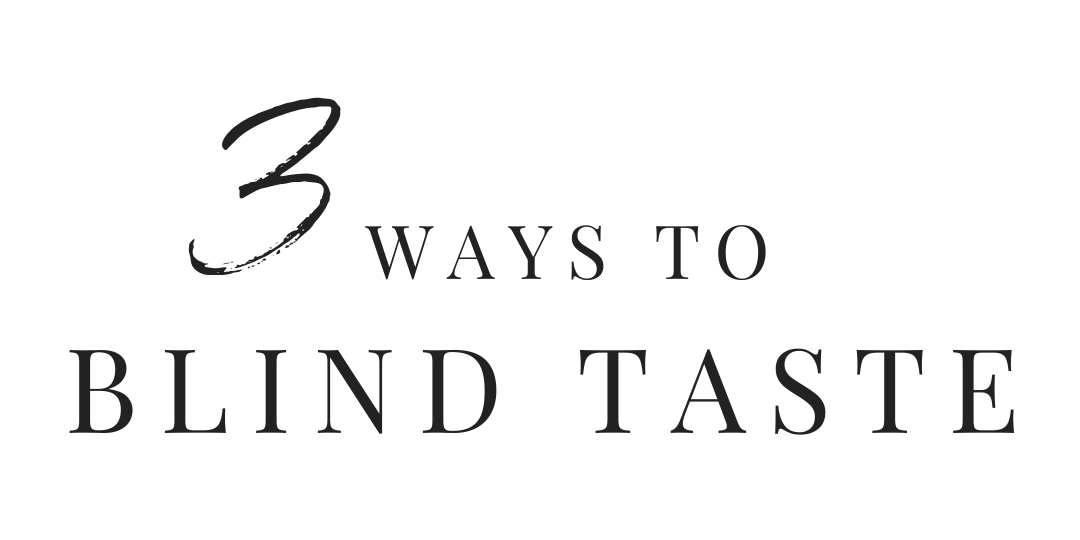

TASTING GROUP
For the student
Studying for a blind-tasting portion of an exam?
We have a virtual tasting group with students from all over the US!
Join us!!

BLIND BUNDLES w/ Accent Wine
For the enthusiast
If you’ve always wanted to understand wine varieties and regions and learn the blind tasting process at your own pace, this is for you!
Carefully curated for all who love wine – from the casual wine drinker to the connoisseur!!

ONE-ON-ONE Consults
For the student
Got an exam on the horizon?
Book a one-on-one virtual coaching call! Our small team of educators will meet with you and create a plan based on what you need to taste and learn about most!

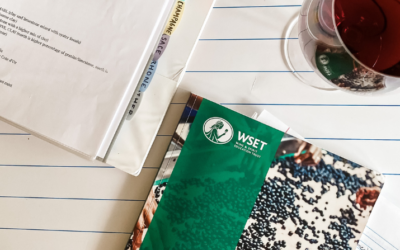
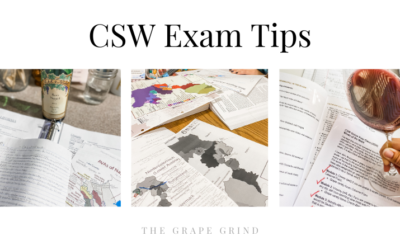
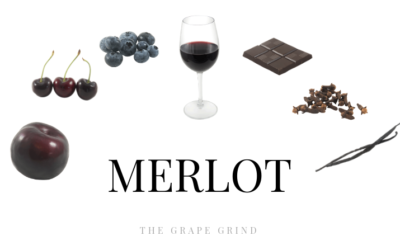

Hello! I love your blog. I am a mother of two young daughters. I have a degree in business focusing on hospitality, tourism/management. I have a passion for wine but at the moment I am a stay at home mom. I speak English but we live in Switzerland for my husbands job (German speaking part). I really want to take the exams to become certified but I’m worried at my job options in a country where I don’t speak the language. With your experience, do you think I can make a career in wine even if I don’t speak the native language. Sorry hard question I know!